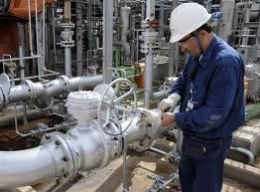
The decline in national production of industrial chemicals and the increase in imports in recent years, which reveal the rapid loss of competitiveness of the Brazilian product, have led to a new record in the sector, although there is no reason to celebrate from the point of view of industry and trade balance.For the first time since 1990, the share of imports in local demand for chemicals reached 35.3%. According to the Brazilian Chemical Industry Association (Abiquim), referring to the sector’s performance in the 12-month period through September, the growth of this slice is a result of the 3.3% drop in chemical production, down 6.3%. of exports and import progress in volume of 9.2%.In values, numbers draw even more attention.
Year to date through September, foreign purchases of chemicals reached $ 34.1 billion, down 1%. Exports, in turn, totaled US $ 10.8 billion, up 1.9%. As a result, the industry’s trade deficit reached US $ 23.2 billion, 2.4% lower than in the same period of 2013. In 12 months, the balance was negative by US $ 31.4 billion, in line with designed for 2014.Rising production costs, especially electricity and raw materials, help explain the scenario. In addition, the availability of low-cost raw materials abroad, especially after the start of shale gas exploration in the United States, has rekindled US petrochemicals and fueled the supply of competitively priced chemicals in the global market.
Regarding the exchange rate, despite the strong devaluation of the real against the dollar in recent months, the current levels are still not healthy, from the perspective of the Brazilian chemical industry. According to the president of Abiquim, Fernando Figueiredo, there is a need for more “realistic” exchange rates in the country. The latest study by the association on the subject indicates that the dollar at $ 2.50 or $ 2.60 would be healthy for the chemical sector and could boost the competitiveness of the national product.In a scenario of lower costs and exchange rate that stimulates exports, investments in the sector would be resumed, the association argues. According to another study by Abiquim, between 2010 and 2020, industry contributions could total $ 167 billion, or $ 16.7 billion per year.
In fact, however, disbursements have been well below these figures, around $ 4 billion and $ 5 billion a year.As long as there is no stimulus and stability, those $ 10 billion a year that are no longer contributed by the sector will hardly be converted into new projects. Even because of the existence of installed capacity that can still be occupied. In September, the usage rate was 77%, seven percentage points lower than in August and six points lower than in September last year. In the first nine months of the year, the average rate was 79%, down three points from the worst level in eight years.It should be noted, however, that September was negatively affected by Braskem’s scheduled maintenance shutdown at the Mauá Petrochemical Complex (SP), which took almost every month and is held every six years. Braskem’s stoppage led petrochemical customers to adjust their schedule and perform maintenance in the same period. Thus, it is natural that both the production and the utilization rate of the sector are lower when there are events of this magnitude. Braskem, the largest petrochemical company in the Americas, achieved high production and sales rates that resulted in a record EBITDA result in 2016. According to unaudited results, the Company’s consolidated EBITDA grew 23% over the previous year and reached R $ 11.5 billion ($ 3.3 billion, up 18% in dollars).

